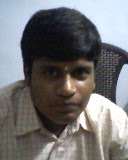In 1997, acupuncture needles were reclassified from "experimental" to "medical device" by the U.S. Food and Drug Administration (FDA). The National Institutes of Health released a consensus statment in the same year endorsing acupuncture for the treatment of a variety of conditions such as post-operative pain, tennis elbow, and carpal tunnel syndrome.
Acupuncture is one of the best known of the alternative therapies. The FDA estimates that people in the United States spend more than $500 million annually on acupuncture treatments. Many people have insurance coverage for acupuncture.
How Acupuncture Works
There are numerous theories about how acupuncture works. Some of them are:- acupuncture stimulates the release of pain-relieving endorphins
- acupuncture influences the release of neurotransmitters, substances that transmit nerve impulses to the brain
- acupuncture influences the autonomic nervous system
- acupuncture stimulates circulation
- acupuncture influences the electrical currents of the body
Conditions Treated By Acupuncture
- migraines and tension headaches
- sinusitis
- common cold
- addictions, quit smoking
- trigeminal neuralgia
- Meniere's disease
- tennis elbow
- sciatica
- arthritis
- menstrual cramps
- fibromyalgia
- low back pain
- asthma
- weight loss
- infertility
What a Typical Acupuncture Treatment is Like
Before the initial appointment, clients usually complete a health history questionnaire. The acupuncturist then interviews the client, asking about his or her primary health concern, lifestyle habits, diet, emotions, menstrual cycle, sleep, temperature, appetite, stress, and sensitivity to foods, temperature, and seasons. During the interview, the acupuncturist examines the client carefully, noting his or her face color, voice, and tongue colour and coating. There are also three pulse points at the wrist of each hand that the acupuncturist will assess to further determine the health of the 12 meridians.After the interview, the acupuncturist gives a diagnosis and begins treatment. Typically, the acupuncturist will use 6-12 needles during the treatment. The number of needles used does not correspond with the intensity of the treatment, rather it is the precise placement of the needles that is important.
Upon insertion, the client may feel a slight sting or prick. Once the needle is inserted, there should be no pain. You should feel comfortable during the treatment. If you experience pain, numbness, or discomfort, notify the acupuncturist immediately.
Treatment length varies from seconds to longer than one hour. The typical length is about 20 to 30 minutes. The acupuncturist may use the following techniques during the treatment:
- moxibustion - heating of acupuncture needles with dried herb sticks to activate and warm the acupuncture point. Also known as "moxa".
- cupping - the application of glass cups to create a suction on the skin. This is to relieve stagnation of qi and blood, e.g. in sports injury.
- herbal medicine - Chinese herbs may be given in the form of teas, pills, and capsules to supplement acupuncture treatment.
- electrostimulation - provides electrical stimulation to two to four acupuncture needles. Can be used for pain relief and muscle pain.
- laser acupuncture - non-needle stimulation of needles




Post a Comment